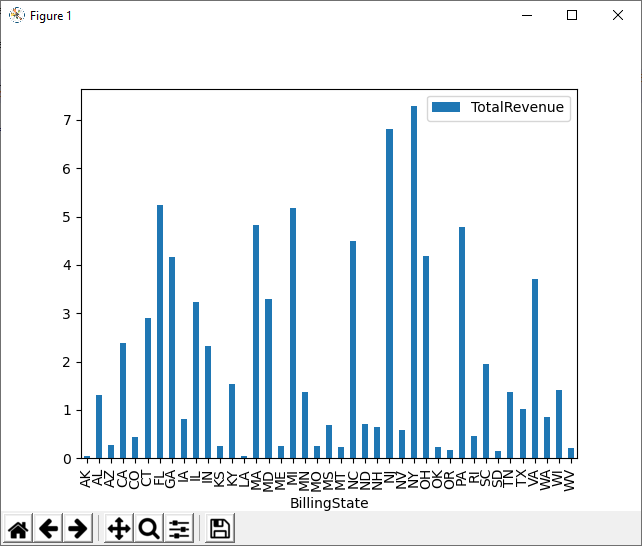Model Context Protocol (MCP) finally gives AI models a way to access the business data needed to make them really useful at work. CData MCP Servers have the depth and performance to make sure AI has access to all of the answers.
Try them now for free →How to Visualize SuiteCRM Data in Python with pandas
Use pandas and other modules to analyze and visualize live SuiteCRM data in Python.
The rich ecosystem of Python modules lets you get to work quickly and integrate your systems more effectively. With the CData Python Connector for SuiteCRM, the pandas & Matplotlib modules, and the SQLAlchemy toolkit, you can build SuiteCRM-connected Python applications and scripts for visualizing SuiteCRM data. This article shows how to use the pandas, SQLAlchemy, and Matplotlib built-in functions to connect to SuiteCRM data, execute queries, and visualize the results.
With built-in optimized data processing, the CData Python Connector offers unmatched performance for interacting with live SuiteCRM data in Python. When you issue complex SQL queries from SuiteCRM, the driver pushes supported SQL operations, like filters and aggregations, directly to SuiteCRM and utilizes the embedded SQL engine to process unsupported operations client-side (often SQL functions and JOIN operations).
Connecting to SuiteCRM Data
Connecting to SuiteCRM data looks just like connecting to any relational data source. Create a connection string using the required connection properties. For this article, you will pass the connection string as a parameter to the create_engine function.
The User and Password properties must be set to valid SuiteCRM user credentials. Additionally, specify the URL to the SuiteCRM application, for example http://suite.crm.com.
Note that retrieving SuiteCRM metadata can be expensive. It is advised that you store the metadata locally as described in the Caching Metadata section of the data provider help documentation.
Follow the procedure below to install the required modules and start accessing SuiteCRM through Python objects.
Install Required Modules
Use the pip utility to install the pandas & Matplotlib modules and the SQLAlchemy toolkit:
pip install pandas pip install matplotlib pip install sqlalchemy
Be sure to import the module with the following:
import pandas import matplotlib.pyplot as plt from sqlalchemy import create_engine
Visualize SuiteCRM Data in Python
You can now connect with a connection string. Use the create_engine function to create an Engine for working with SuiteCRM data.
engine = create_engine("suitecrm:///?URL=http://mySuiteCRM.com&User=myUser&Password=myPassword")
Execute SQL to SuiteCRM
Use the read_sql function from pandas to execute any SQL statement and store the resultset in a DataFrame.
df = pandas.read_sql("SELECT Name, Industry FROM Accounts WHERE Industry = 'Manufacturing'", engine)
Visualize SuiteCRM Data
With the query results stored in a DataFrame, use the plot function to build a chart to display the SuiteCRM data. The show method displays the chart in a new window.
df.plot(kind="bar", x="Name", y="Industry") plt.show()

Free Trial & More Information
Download a free, 30-day trial of the CData Python Connector for SuiteCRM to start building Python apps and scripts with connectivity to SuiteCRM data. Reach out to our Support Team if you have any questions.
Full Source Code
import pandas
import matplotlib.pyplot as plt
from sqlalchemy import create_engin
engine = create_engine("suitecrm:///?URL=http://mySuiteCRM.com&User=myUser&Password=myPassword")
df = pandas.read_sql("SELECT Name, Industry FROM Accounts WHERE Industry = 'Manufacturing'", engine)
df.plot(kind="bar", x="Name", y="Industry")
plt.show()

